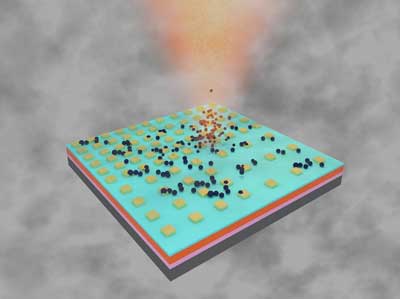| Posted: May 11, 2018 |
Microscale IR spectroscopy enabled by phase change materials and metasurfaces
(Nanowerk News) The mid-infrared is an interesting part of the electromagnetic spectrum that is composed of colours that cannot be seen by the human eye. Many chemical molecules resonate when illuminated by infrared light. This infrared resonance can then be used to identify or "fingerprint" the molecules.
|
|
The infrared is, therefore, useful for a range of applications, including atmospheric pollution monitoring, detecting explosives and narcotics, measuring food quality, and many others. However, infrared optical components tend to be large, expensive, and non-tuneable.
|
|
Researchers from the Singapore University of Technology and Design (SUTD) in collaboration with Dalian University of Technology (DUT) and the Singapore Sinchrotron Light Source (SSLS), have demonstrated that tuneable phase change materials, which are more typically found in data storage devices, can be used to tune the response of microscale infrared transmissive "metasurface" filters.
|
 |
| Illustration of the metasurface interacting with gas molecules. (Image: Singapore University of Technology and Design)
|
|
The filters can be tuned across the broad band of frequencies in the mid-infrared spectrum where many pollutant gasses vibrate (Advanced Optical Materials, "Tunable Mid-Infrared Phase-Change Metasurface").
|
|
SUTD lead researcher, Assistant Prof Robert Simpson said: "These infrared filters are so small that they can be incorporated into a smart phone. This would allow you to measure the quality of the oil that has been used to fry your food, measure the air that you breathe, or to measure fluids that are expelled from your body to check the condition of your health."
|

